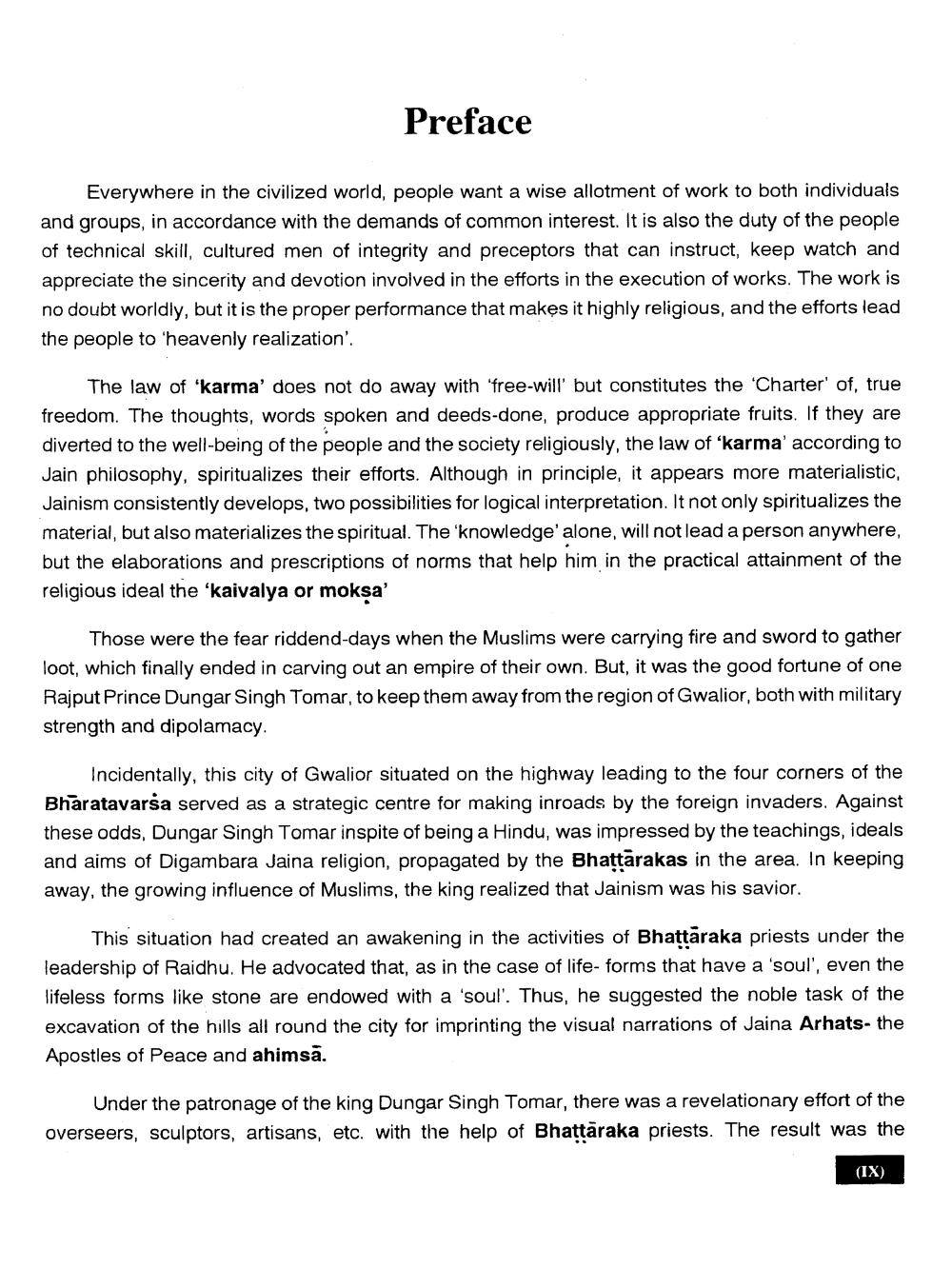________________
Preface
Everywhere in the civilized world, people want a wise allotment of work to both individuals and groups, in accordance with the demands of common interest. It is also the duty of the people of technical skill, cultured men of integrity and preceptors that can instruct, keep watch and appreciate the sincerity and devotion involved in the efforts in the execution of works. The work is no doubt worldly, but it is the proper performance that makes it highly religious, and the efforts lead the people to heavenly realization".
The law of 'karma' does not do away with 'free-will' but constitutes the 'Charter' of, true freedom. The thoughts, words spoken and deeds-done, produce appropriate fruits. If they are diverted to the well-being of the people and the society religiously, the law of 'karma' according to Jain philosophy, spiritualizes their efforts. Although in principle, it appears more materialistic, Jainism consistently develops, two possibilities for logical interpretation. It not only spiritualizes the material, but also materializes the spiritual. The 'knowledge' alone, will not lead a person anywhere, but the elaborations and prescriptions of norms that help him in the practical attainment of the religious ideal the 'kaivalya or mokṣa'
Those were the fear riddend-days when the Muslims were carrying fire and sword to gather loot, which finally ended in carving out an empire of their own. But, it was the good fortune of one. Rajput Prince Dungar Singh Tomar, to keep them away from the region of Gwalior, both with military strength and dipolamacy.
Incidentally, this city of Gwalior situated on the highway leading to the four corners of the Bharatavarsa served as a strategic centre for making inroads by the foreign invaders. Against these odds, Dungar Singh Tomar inspite of being a Hindu, was impressed by the teachings, ideals and aims of Digambara Jaina religion, propagated by the Bhattarakas in the area. In keeping away, the growing influence of Muslims, the king realized that Jainism was his savior.
This situation had created an awakening in the activities of Bhattaraka priests under the leadership of Raidhu. He advocated that, as in the case of life- forms that have a 'soul', even the lifeless forms like stone are endowed with a 'soul'. Thus, he suggested the noble task of the excavation of the hills all round the city for imprinting the visual narrations of Jaina Arhats- the Apostles of Peace and ahimsa.
Under the patronage of the king Dungar Singh Tomar, there was a revelationary effort of the overseers, sculptors, artisans, etc. with the help of Bhattaraka priests. The result was the
(IX)




